Ergonomic furniture for schools and homes
The company was founded in 1906 by Heinrich Flötotto, the great-grandfather of the current director, as a small carpentry workshop in Gütersloh in North Rhine-Westphalia. Nevertheless, they switched relatively quickly to mass production and offered home furniture and interior fixtures and fittings.
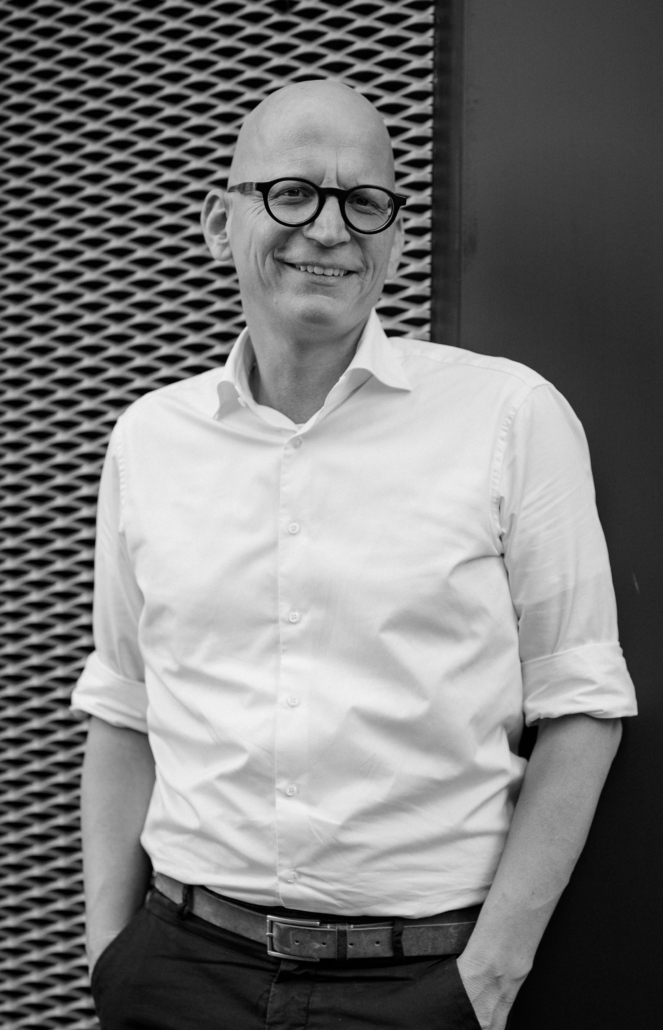 During the WWII, the company had to produce tailplanes for the first jet aircraft. Due to the lack of aluminium, they used a specially developed material, so-called PAG® wood. These thin beech veneers were pressed into moulds with phenolic resin. Frederik Flötotto, CEO of the family company of the same name, told us more about it.
During the WWII, the company had to produce tailplanes for the first jet aircraft. Due to the lack of aluminium, they used a specially developed material, so-called PAG® wood. These thin beech veneers were pressed into moulds with phenolic resin. Frederik Flötotto, CEO of the family company of the same name, told us more about it.
How did the new material come about?
What was originally intended only for tailplanes and other parts in aircraft construction was developed by my grandfather and his brother Fritz Flötotto for furniture production. It was the basis for the wooden shell of the seat, which had such innovative properties that it was mainly predestined for use in schools. This made Flötotto the market leader in the school furniture production segment. Since 1952, more than 21 million so-called Flötotto contoured-seats have been sold worldwide.
How has the company and its production programme developed over the years?
Great success and market leadership in the area of furniture for educational institutions made the company slowdown in the 1970s and 1980s and make way for competition. Flötotto lost large market shares at that time. When Frederik Flötotto took over the management of the company in 2019, school furniture came back into the spotlight. Today, Flötotto is once again a leader in innovations for the sustainable planning of learning spaces and equipment for educational institutions. We are intensively involved in the latest development in education and that is why we develop new equipment. Our offer starts with typical ‘free standing furniture’ for learning spaces and extends to open learning landscapes, specialist classrooms, dining rooms, auditoriums, corridors and modern teachers’ offices. In addition to free standing furniture, we also offer complete furniture programmes. That also makes us your partner for customized interior furnishing. We can synchronize all materials, colours, decors, both free standing and affixed equipment. The atmosphere and sense of space that this connection creates is unique. This also turns the learning spaces into living areas that offer enough space for social interaction.
How have customer requirements changed and where is the current trend headed?
We focus on learning for the future and experience a major revolution in this area. In the Czech Republic alone, we work on countless innovative projects and represent a relevant development partner of school authorities. We have a daily contact with teachers at respective schools. Our new learning space and open classroom concepts support children and youth in an age-appropriate manner – from playful learning in lower years through to deep learning in the upper years. That is why we create a variety of harmonized learning environments that enable different working conditions: spaces that can be modified in different ways or used to support interdisciplinary pedagogy, mobile furniture in different surface heights that allow activities to be conducted while seated or standing. These are larger and smaller room constellations for different environments, for example with soft upholstered modules that also include the floor as a working and learning area.
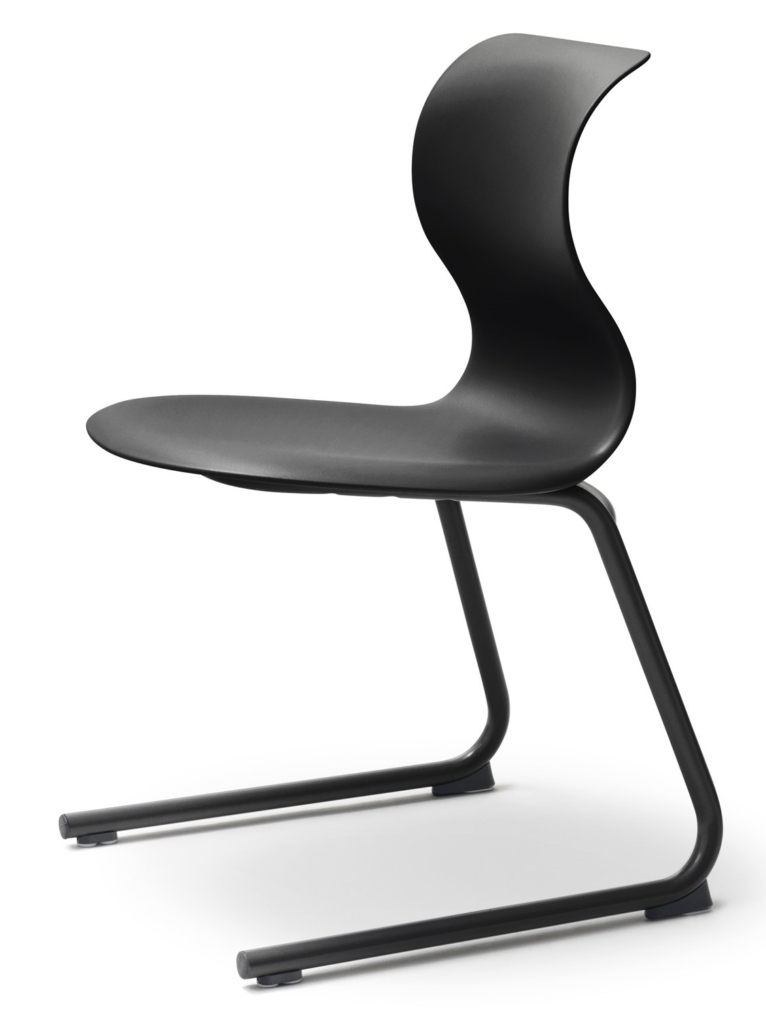 How do you cooperate with designers? Do you use well-known names and reputable studios, or do the designs come from your own studio?
How do you cooperate with designers? Do you use well-known names and reputable studios, or do the designs come from your own studio?
The development of new products is always preceded by a fundamental process. We work with pupils and teachers and listen carefully in order to identify problems that occur in the everyday life of school. The usual range of standard school furniture manufacturers from the 1970s does not offer solutions for new and sustainable learning for the future. That is why we are here to develop new products. We usually work with external designers who bring a new perspective, look at the problem more objectively, come up with different approaches and inspire us. For us, it is not so important whether the designer is of a great repute. What is decisive for us is whether he is prepared to pursue the issue intensively and to work closely with us. Of course, we are still pleased that designer Konstantin Grcic has developed our most famous product, the student chair PRO CHAIR. Konstantin Grcic is no doubt one of the most sought-after designers in the world. However, fame was not the main criterion for choosing our joint key product. It was more likely the precise analysis of the assignment and the extremely professional and sensitive implementation of the design process. Design, ergonomics, production processes, budget specifications – a good designer takes all these aspects into account in his designs.
You address your offer to architects, developers and local authorities. How does our market perceive experiences from abroad?
Our ideas, approach and expertise are met with great openness. Our contacts include architects, local authorities or schools alone. We work on an international level, accept new ideas and different demands for the future of education from around the world. In a certain way, we function as a ‘melting pot’ and can integrate this international experience into our projects, for instance here in the Czech Republic. This results in an educational space that fully meets local requirements, but at the same time complements all useful experiences and aspects from abroad. This way we can also offer and implement innovations at the highest level.
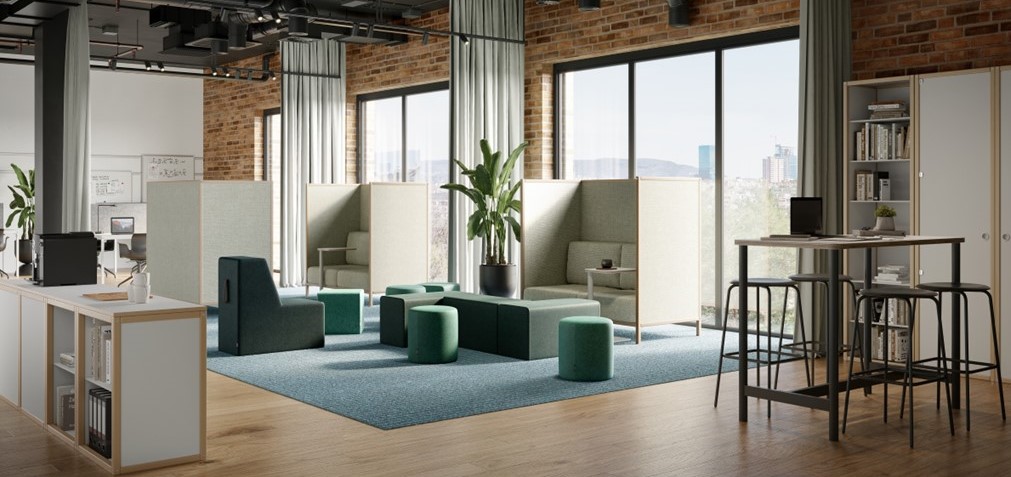 You mainly produce furniture for school facilities. Do you also offer some other assortment? What is its share in the total production volume?
You mainly produce furniture for school facilities. Do you also offer some other assortment? What is its share in the total production volume?
Apart from school furniture, Flötotto has always also offered a completely separate collection of furniture for homes. Our profile system celebrates its 50th anniversary this year and covers all important areas of life and housing. Modular furniture is a kind of modular system with great flexibility that intelligently and timelessly meets the needs of our customers – from the living room to the bedroom to the children’s and teenager’s room. Compared to the school furniture division, the home furniture division accounts for approximately 25% of our total production volume and remains an important part of our portfolio.
In addition to design, ergonomics also plays an important role in the development of a new model. Does it mean that you invest in research and cooperate with experts and doctors?
Ergonomics is very important, the key word actually. Taking our PRO CHAIR as an example, ergonomics was the starting point of development. Pupils sit in a chair for many hours a day. Although the school environment constantly evolves and pupils have more and more movement while learning, the chair remains indispensable. On its development, we worked closely with the German Sports University in Cologne and created a commission made up of ergonomics experts and doctors. Chairs are often designed to give the user as much support as possible. However, we wanted the opposite – a chair that not only allows movement in all directions, but a chair that actively supports movement. That is why our almost circular seat is rounded on all sides, the flexible backrest is very narrow and has a pronounced ace-shaped curve for temporary lumbar support. Thanks to our chair and intuitive movements on it, more than 400 muscles are naturally trained by switching between tension and relaxation. Intervertebral discs are better supplied with blood and nutrients. This intuitively supports an active and productive sitting position. Last but not least, our open sitting position also supports pedagogical requirements and the alternation of individual and group work.
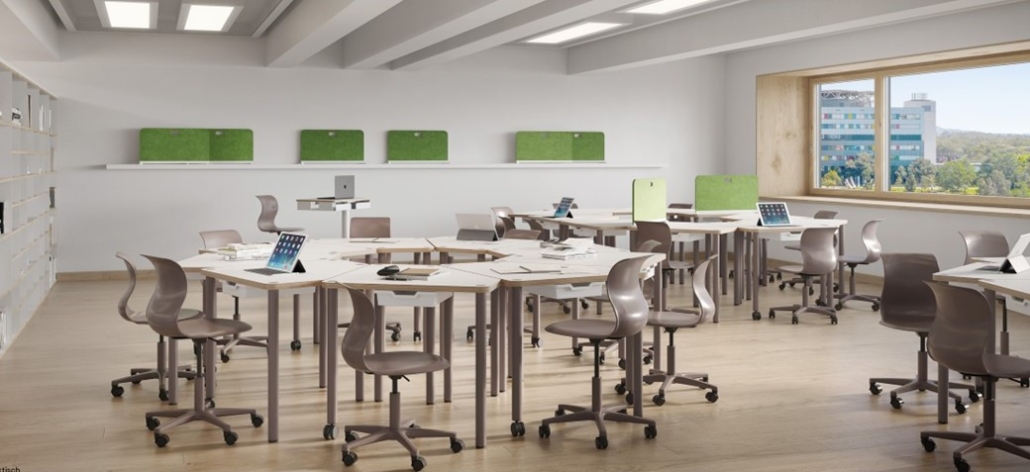 Which model or programme do you find the most successful?
Which model or programme do you find the most successful?
Our strongest product group is the PRO CHAIR collection. Basically, it consists of a seat and a frame that come in different colours and sizes. By combining the seat shell and our frames with many practical accessories (three-dimensional seat mechanism, writing pad, storage baskets, upholstery, leather cover, etc.), we can offer over 10,000 different configurations. Thanks to this diversity, we equip not only schools from all fields of study, but also modern office spaces, training centres, concert halls, hospitals, restaurants, and even produce the right chairs for a home office or a dining room.
What is your plan for the future? What do you want to focus on?
Our strategy is to further expand our position as a leader in school furniture innovation. We want to be the best at what we do. What is also very important for us is to pay special attention to responsibility towards society and the environment. Our commitment to the environment has already been awarded with the ISO 14001 certification. In their daily work, our teams from around the world implement everything that is necessary to save energy and resources. We are also currently starting to certify all products with the EU Ecolabel. It goes without saying that all the wood we use is PEFC/FSC certified; we also only use water-based paints. All products are designed from the outset to be repairable and recyclable at the end of their life cycle. We are also working on a 100% circular economy concept so that the seat shells can be recycled, and new seats can be made from the recycled material. We are just at the beginning with many of the ideas that we intensively work on, and we want to develop them further. Stick with us. The future starts right now!
Alica Born
Photo: Flötotto archive

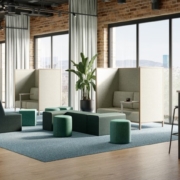


Leave a Reply
Want to join the discussion?Feel free to contribute!